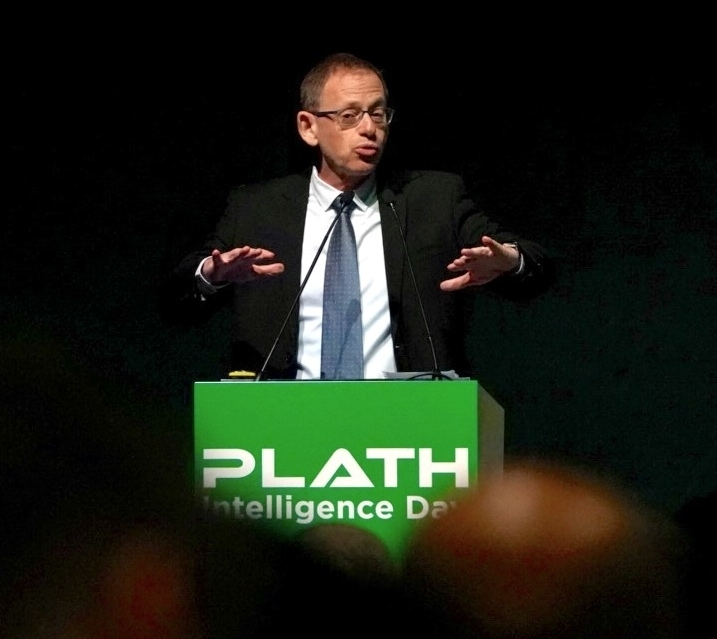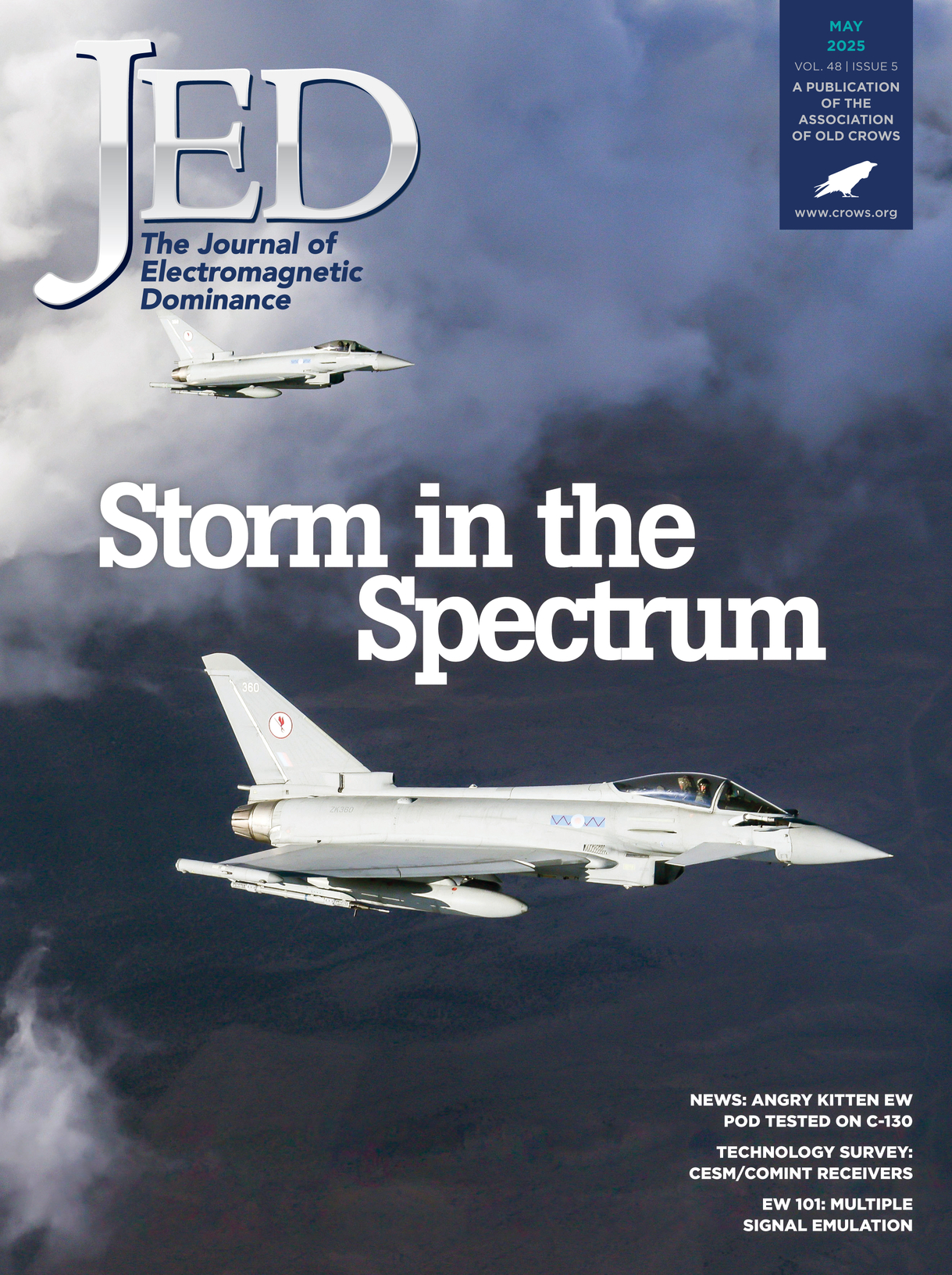 |
||||||||||||||||||||||||||||||||||||
| Archive | Subscribe | Crows.org | JED Resource Guide | WWW.JEDONLINE.COM | ||||||||||||||||||||||||||||||||||||
|
From the Editor
The morning session of Plath Intelligence Day provided unique insights about the intelligence challenges facing European nations. Nico Scharfe, managing partner at Plath, introduced the day's two themes – multi-domain autonomous intelligence and real-time intelligence, data fusion and adaptation – to nearly 600 attendees. Scharfe said Europe's intelligence challenges are shaped by three main factors influencing both government intelligence organizations and industry. "First, we have to reinvent ourselves," he said. The changes happening on the battlefield are so dynamic, he explained, that governments and industry must accelerate the adoption of new standards and develop new acquisition methods to rapidly field new equipment. Scharfe emphasized the importance of results and not intentions. "The most important thing is that the forces in the field get the new equipment and that it's not just 'planning' new equipment," he said. The second factor Scharfe identified is that governments must buy capabilities "more intelligently." He said that budgets are not a problem and that required funding is available. "But there's a big threat that we are buying more of the old stuff," he explained, "especially in the field of intelligence. I think with the dynamic around us, it's a very big danger if we buy things we bought or designed 20 years ago, again. So we have to buy more intelligently [those] new things which help us to adapt to the new challenges." The third factor Scharfe identified is the need to cooperate. "There's no way to do it alone," he said. "We have to think in strategic foresight and partnerships to work together. And this does not only mean the industry, but also the user side. You cannot counter the challenges we have alone." Scharfe then identified six key developments that are important to track. "First, electronic warfare is on everybody's list. Information superiority is the key to success – or also denying it," he said. The second key development is the growing use of unmanned systems. Third, he said, with the rise of unmanned platforms, "the question is we are getting much more data to [and from] more sensors on more platforms, so we have to automate all our processes as fast as we can to be more effective with the data we are receiving." Fourth, Scharfe expained, the government customers want more sensors. "The times are over where we had one big platform with one big sensor. Customers want to have more sensors, more data, and more platforms in action. This what we call 'more sensor for the buck.'" Fifth is the customer wishes to have SIGINT solutions that are less proprietary and easily upgraded. "This means that he wants to have a design…that he can adapt to the new challenges quickly and doesn't have to wait till the vendor is willing to do this. This means open interfaces, possibilities to plug and play, new ways to meet challenges with existing platforms," he explained. The sixth development is the blurring line between SIGINT collected for military needs and SIGINT collected for homeland security applications. He said, "We are very often using the same tools, especially in the field of intelligence" against the same threats and targets. "So that is something where we can, if we move together, [also] work faster." – JED Staff
Today's Events
Review the online schedule of events and symposium agenda to finalize your on-site agenda. Get out your smartphone and download the conference app from the App Store or Google Play. Follow us on Facebook or LinkedIn and use #AOCEUROPE2025 to join in the conversation. Symposium Happenings
Admiral Davide Berra, former commander of Italy's Joint Intelligence Center provided the morning keynote address, which also helped to shape some of the day's discussions. Admiral Berra said, "We are living in a complex scenario." He said governments are comfortable managing this complexity, but it becomes a much bigger challenge when these complex scenarios change in non-liner ways. He also echoed some of Scharfe's earlier points about innovation. "We must embrace innovation as a central pillar of our collective defense strategy," he said. "The innovation is not just technological, but it's a state of mind. We need not to be focused on what we have now but we have to focus on what will be tomorrow – on the moment that is to come." In terms of future developments, he said that multi-domain operations create new challenges. "It's important to have in mind that now we have no time to decide…. It requires great agility and a great precision in data collecting, in analyzing, in storing and retrieving," he explained. He noted that in the past, scenarios were less complex: the enemy was usually approaching from one direction in one domain. "What is the enemy doing now? To answer this question is very, very, very complicated because the enemy moves not only on land, on the sea, under the sea, [and] in the air, but [also] moves in space, moves in cyber and moves at the same time in all these domains." This multidomain complexity, he said, emphasizes the capability to fuse data, "to understand very quickly what's going on" Admiral Berra also discussed the importance of AI and the role of human intelligence. "AI is important," he said, "but it is not the solution to all of our problems. So artificial intelligence is fantastic, it's fundamental, it's central. But it needs to be trained, needs to be taught, needs to be managed by a human. Please, when you think of your system of the future, when you think, when you manage the system that you have, when you use the system you have, keep in mind that the human factor remains central, even in front…of artificial intelligence." – JED Staff
"Detecting (threats) is not enough. After detecting we also need to be able to track the threats all along to see where they are going. And for that, typically, we also need to fuse that information to integrate it. Some of the speakers before talked about the importance of data fusion from various sources. It can't be more true than for air defense." – Adi Dulberg, VP & GM Intelligence, Communications & EW Division, IAI ELTA Systems Exhibitor Happenings
Official Expo Hall hours during the AOC Europe 2025: Today Thursday, May 8
Inside the Convention
Today: The Welcome and Symposium Keynote Address will run from 9:00-10:15 AM on the main stage and will feature Dr. Bob Andrews, MBE, AOC Director of Global Events; Air Marshall Philip Sturley, CB, MBE, FRAeS, Symposium Chairman; Anthony (Tony) Lisuzzo, AOC President; Lieutenant Colonel Erik Bamford, AOC International Region 1 Director; Dr. Lorenzo Benigni, President, AOC Pretorian Chapter. The symposium keynote will be delivered by General Luciano Portolano, Chief of Defence, Italy. Lieutenant General Luca Goretti, Chief of Italian Air Force, Italy, will deliver the Day 1 keynote on the main stage beginning at 10:50 AM. Thursday, May 8 – Commander Malte von Spreckelsen, DEU CYBER and INFORMATION Domain Command, Germany, will deliver the Day 2 kenote on the main stage beginning at 9:30 AM. More details are available in the full agenda. JED News
Read the May issue of JED Cover Story: Storm in the Spectrum: Typhoon in Line for Next-Generation EW Capabilities The Journal of Electromagnetic Dominance (JED) is the official publication of the Association of Old Crows (AOC), an independent, nonprofit, international professional association promoting public understanding in the science and practice of EW, SIGINT and related disciplines. Become an AOC member to get access to the latest issue of JED. Digital Pub Bin
Check out current issues and news from our media partners throughout the week. JED |
||||||||||||||||||||||||||||||||||||





